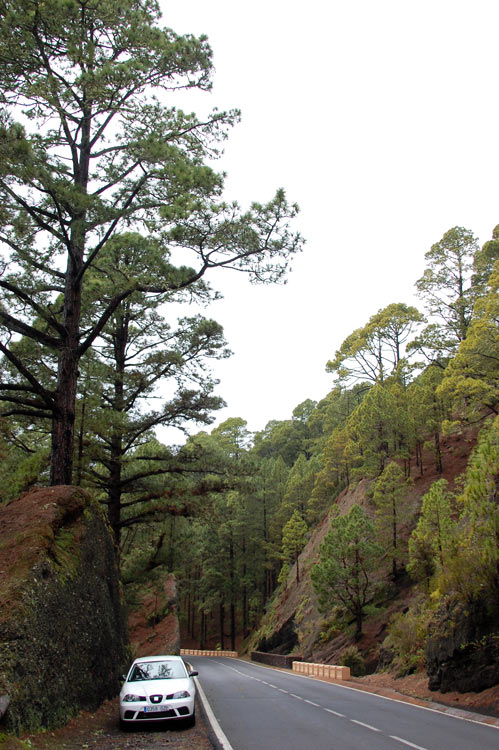
Next day was a drive up the middle of Tenerife to Parque Nacional del Teide. Fully 3718m high, Pico del Teide is the highest peak of the Canary Islands (and the rest of 'Spain', for that matter) and, as with anywhere of that altitude, presents exciting opportunities for diverse flora as you pass through the various climate zones. The areas of prime interest for us are where you start to see some significant frosts and this is from around 1200m altitude and up.
A good but winding road takes you higher and higher until you reach the mist zone and through the dense forests of Pinus canariensis - we stopped along the way to look at various things that caught our attention.

A common plant in both Gomera and Tenerife (plus other islands) is Aeonium aureum. The Gomeran one was once A. diplocycla and all were once classified as Greenovia spp (still are, according to some folks) but, whatever they are, they must be tough as they were to be found clothing rock faces (usually the northern aspect and often dripping wet) right up beyond 2000m to the upper fringe of the pine forest.
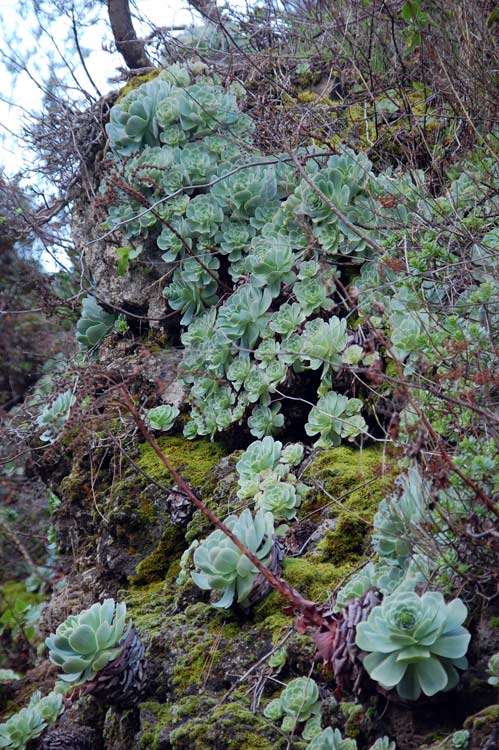
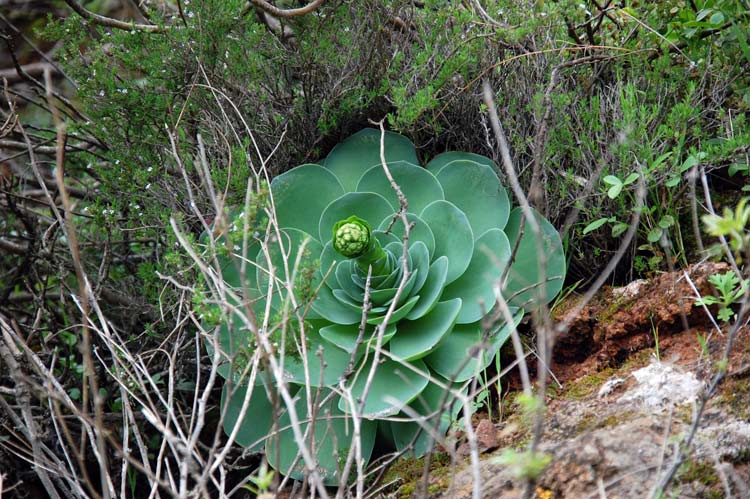
An interesting rock formation below:
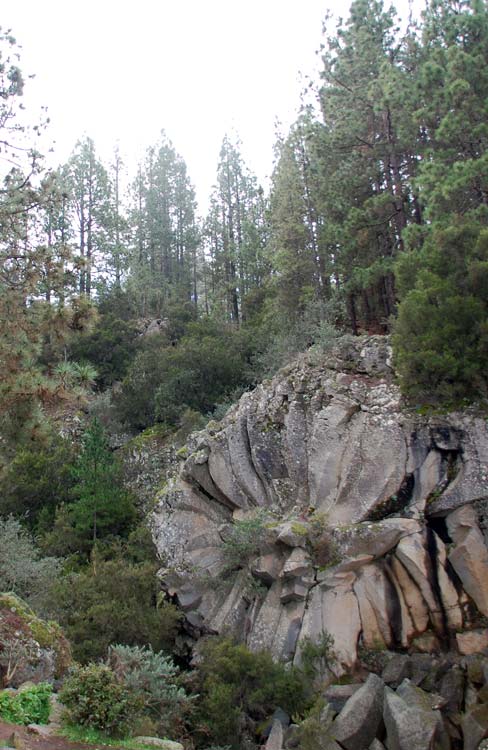
One of our main aims was to find Aeonium spathulatum, said to be the hardiest of aeonium species and taking temperatures down to perhaps -10C. In the event it wasn't hard as it was growing everywhere in the cool-cold zones - usually in shade but occasionally into the sunnier areas, where it took on more colour. It isn't huge - more reminiscent of something like Sedum palmeri than an aeonium. Nevertheless it should make an interesting addition to the succulent garden for temperate growers.
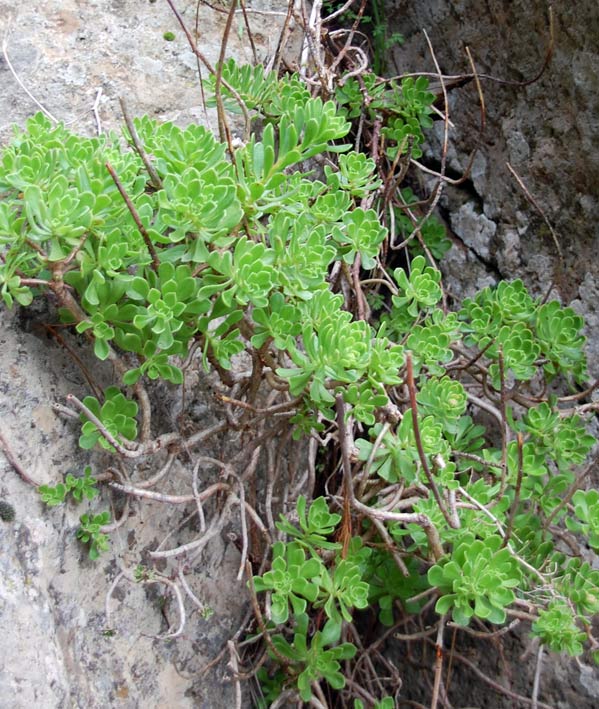
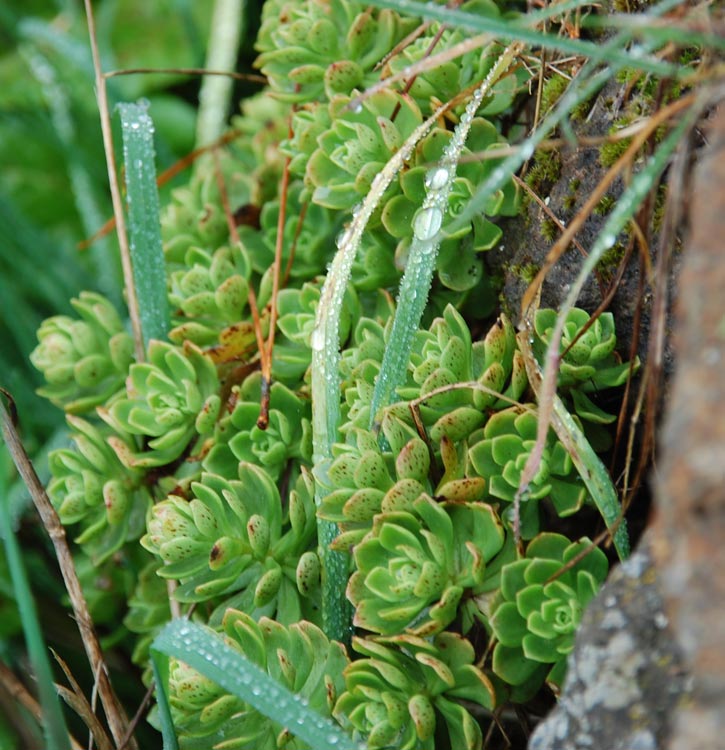
Up a little further to the upper reaches of the pines and back into the sunlight:
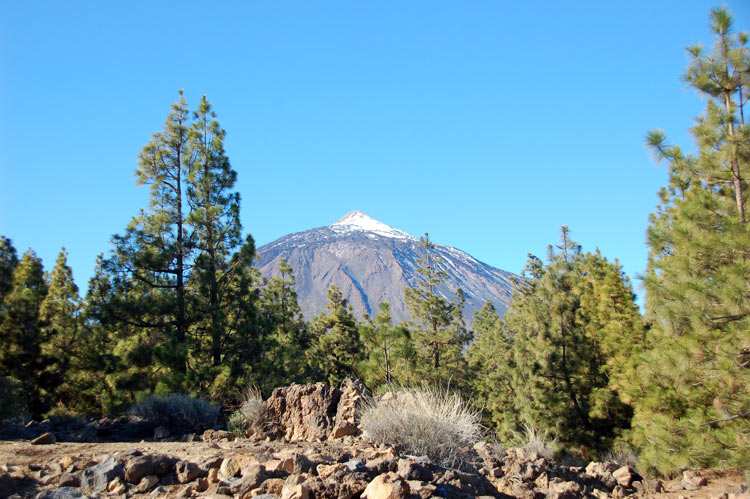
And then to around 2000m and the incredible landscape of Las Caņadas plateau
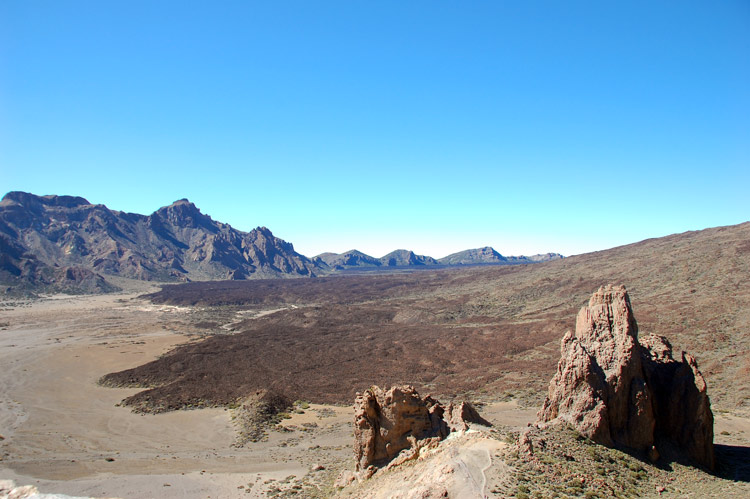
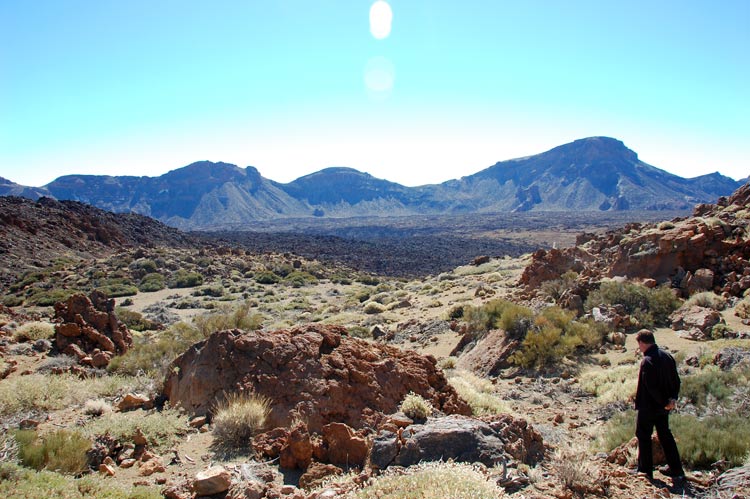
This is the terrain where Echium wildretii (below) is found growing. Quite a hostile environment with the potential for large diurnal swings in temperature seeing maybe -10C or lower at night to perhaps 25C during the winter. The plants were almost always growing in tight crevices between or at the base of rocks, out of the wind. Rarely out in the open. It must be quite a spectacle to visit here when they are in full flower.

Some famous rock formations:
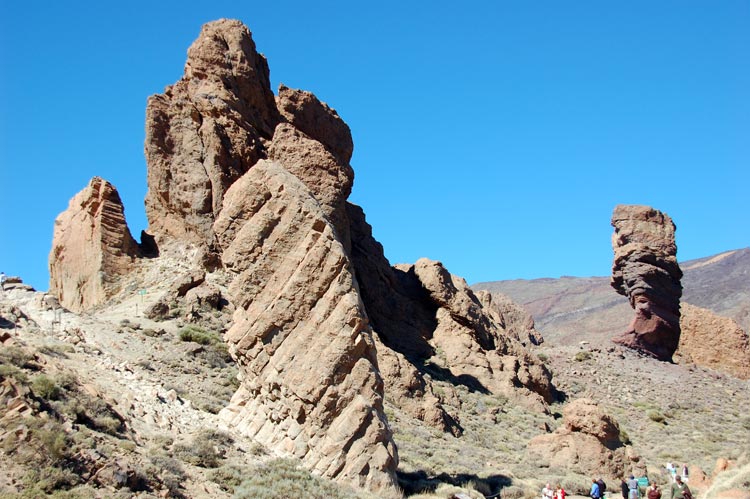
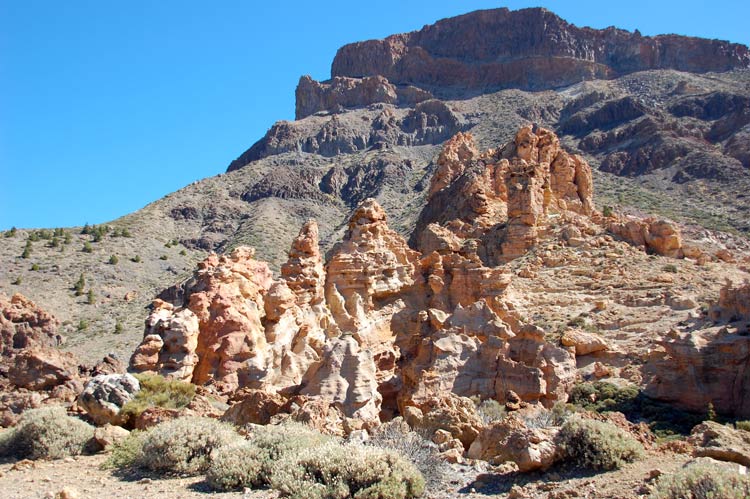
We then left the Teide national Park and drove off to the western corner of Tenerife (still only just over an hour away!) to a place in the mountains called La Masca. We saw some interesting plants but, frankly, once again the breathtaking scenery stole the show. The tiny blue speck lower right of centre is a bus, for scale.
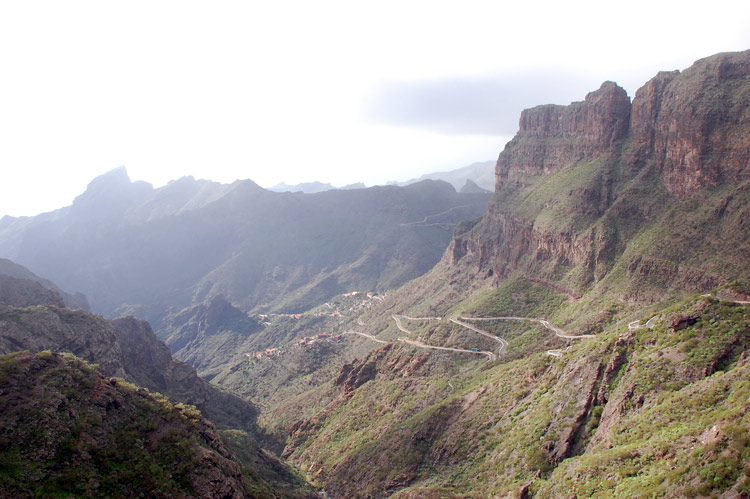
The hamlet of La Masca itself:
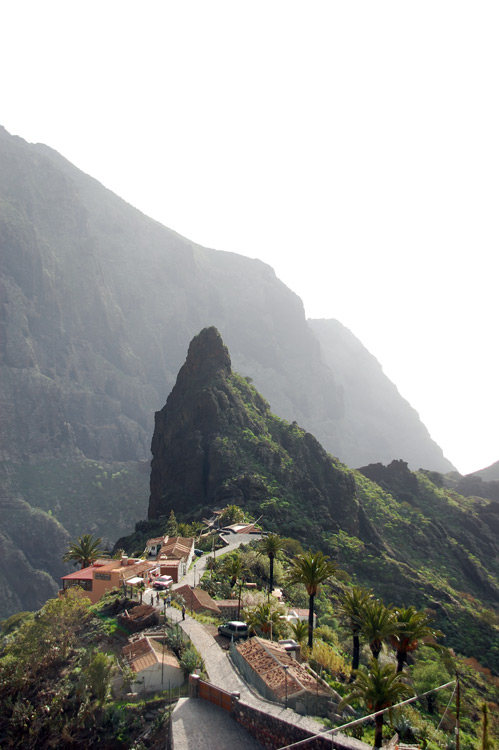
We headed back east - pausing briefly to look at the famous ancient Dracaena draco 'El Draco' in the coastal town of Icod de Los Vinos and again briefly at a small town called Garachico - again, a lovely spot to sit a relax. Here is the church on the main plaza:
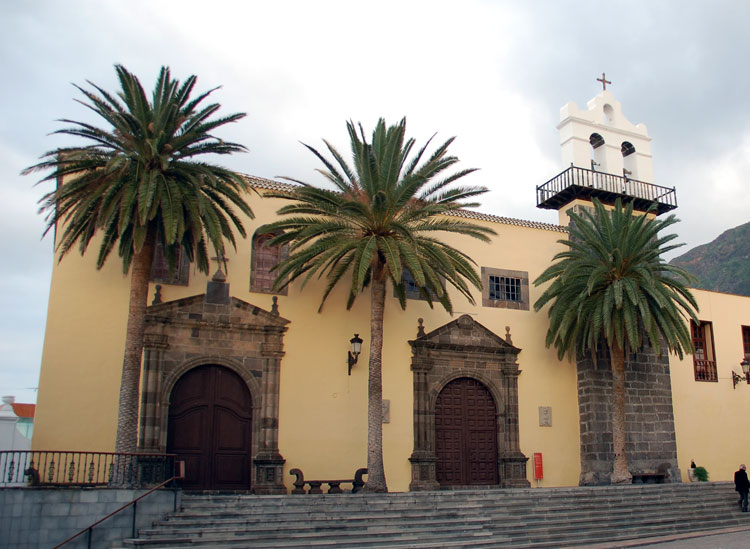
Looking back at those pictures it is incredible to think that it is possible to see such variable, heart-stopping scenery in one day.